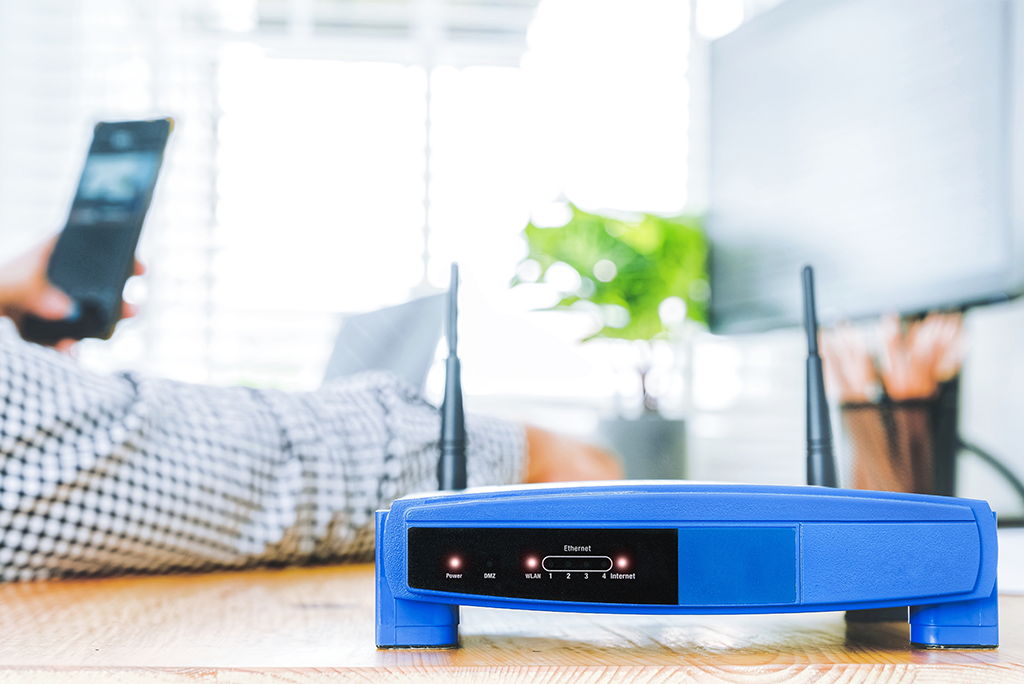
Verizon became the first major U.S. provider to offer 5G home internet service in October of 2018. To promote its launch, the company gave Sacramento, Los Angeles, Houston, and Indianapolis three months of free 5G home internet service.
What is 5G Home Internet?
In order for consumers to get internet at home, it can be delivered through phone lines in the form of DSL, beamed down from satellites, or through the copper cable lines that go into the home. A less common option is delivery through high-speed fiber optic cables as this method is not widely available throughout the U.S.
5G home internet would be an alternative that beams the signal into the house. Currently, Verizon’s 5G Home service utilizes a high-frequency radio wave (mmWave) that wirelessly transmits data back and forth between a nearby cell tower and a receiver located in the home.
5G Reaching Home
As of October 2019, the company expanded its 5G home service by one more city, Chicago. A Verizon executive stated that the company is waiting for capable equipment before increasing the availability of 5G home internet, which they expect for the second half of 2020. The wait is in part due to the lack of millimeter-wave home modems. While Verizon may only be offering 5G home internet in five cities, its 5G mobile services are available in 31 locations.
Telecommunications company T-Mobile is also talking about offering customers 5G home internet services, claiming that it will be able to provide 5G home broadband services to 90% of the U.S. by 2024 as a result of a possible merger with Sprint. However, this is not definitive as the merger still in court and Sprint—like Verizon—has had issues with equipment availability.
Securing 5G
The U.S. House of Representatives recently passed The Secure 5G and Beyond Act, S. 893 (116). If enacted, the bill would require the White House to create and execute a clear strategy for securing 5G. Its purpose is to protect U.S. consumers and assist allies in maximizing the security of their 5G telecommunications systems. The strategy would also identify additional ways to spur research and development by U.S. companies in a way that maintains reliable internet access.
Representative Francis Rooney states, “The United States needs to be proactive in preventing any vulnerabilities that could be exploited by our adversaries. In our increasingly interconnected world, that means protecting our telecommunications and infrastructure, and those of our allies, from malign foreign interference…Today’s passage of this critical bill, which I was honored to cosponsor, will assist in ensuring the safety, security, and freedom of the United States and in safeguarding our technology infrastructure.”
Discover 5G
As 5G coverage maps continue to advance, many organizations are getting ahead of the curve by investing heavily in this telecommunications technology. Is your organization ready? Consider training your team with 5G Networks, a course program from IEEE and Nokia, which will be released later this year.
Connect with an IEEE Content Specialist today to learn more about the program.
Interested in learning more about 5G for yourself? Visit the IEEE Learning Network today!
Resources
Lee, Dami. (1 October 2018). Verizon’s 5G home internet service is now live in four US cities. The Verge.
Levine, Alexandra. (24 July 2019). The FTC-Facebook finale. Politico.
Knapp, Mark. (28 December 2019). 5G Home internet doesn’t deliver game-changing speeds – but it’s a start. TechRadar.
Sagan, Sacha. (10 January 2020). 5G Home Internet Won’t Happen Until Later in 2020, Alas. PCMag.
Peters, Jay. (10 January 2020). Verizon delays in-home 5G rollout again due to the need for new equipment. The Verge.
(13 January 2020). Legislation Passed to Build National 5G Strategy & Protect US Telecommunications Networks. Security Magazine.


No comments yet.